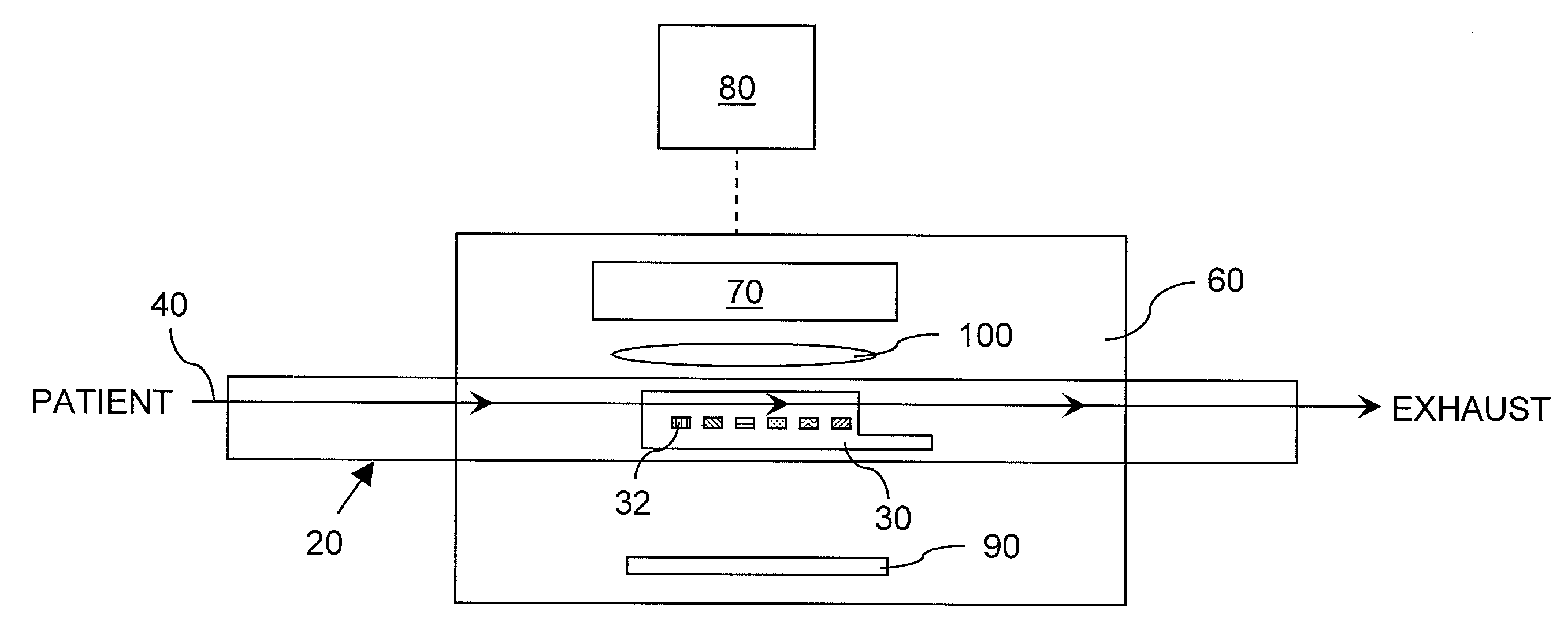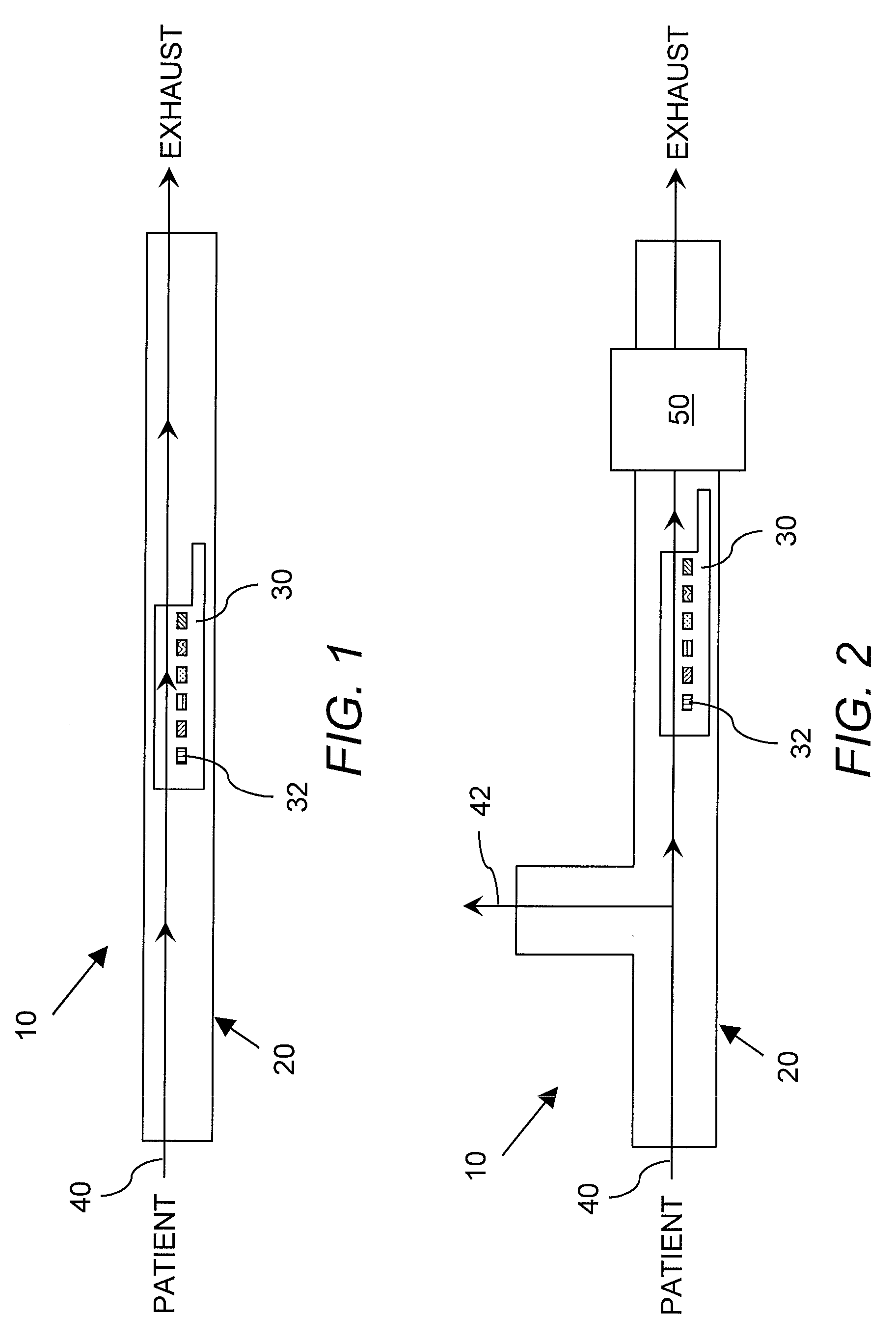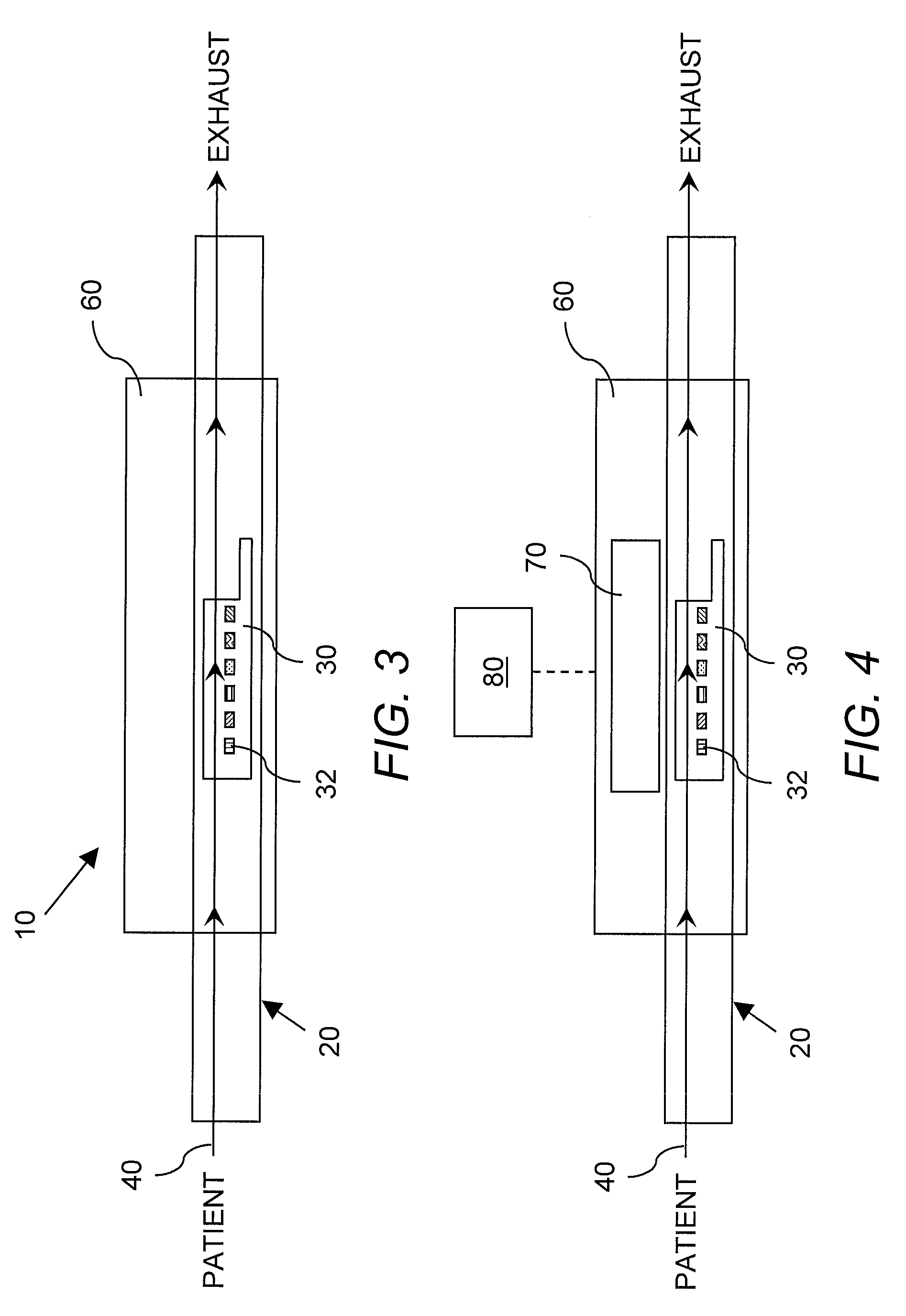Apparatus and method for detecting lung cancer using exhaled breath
- Summary
- Abstract
- Description
- Claims
- Application Information
AI Technical Summary
Benefits of technology
Problems solved by technology
Method used
Image
Examples
example 1
[0050] One hundred and forty-three individuals were examined for lung cancer both with conventional diagnostic techniques and by application of a colorimetric sensor array as disclosed herein to analyze exhaled breath. The lung cancer and lung disease status, as determined by conventional diagnostic techniques, of these individuals was listed in Table 1.
TABLE 1Disease StateNumberNon-Small Cell Carcinoma (NSCCA)49Healthy21Sarcoidosis20Pulmonary Arterial Hypertension (PAH)20Idiopathic Pulmonary Fibrosis (IPF)15Chronic Obstructive Pulmonary Disease COPD18
[0051] Subjects performed tidal breathing for 12 minutes. The breath was pulled over the colorimetric sensor array, which was positioned on a flatbed scanner, at a controlled flow rate by a downstream air pump. The entire system, to include breath capture tubing, was held at physiological temperature. Software was used to drive the scanners, collect images, analyze images, and calculate color change values for e...
example 2
Dye—Analyte Pairs
[0053] Table 3 provides a list of dyes, the analytes which the dyes can detect, and the resulting color change.
TABLE 3DyeAnalyteColor ChangeCresol Red (basic)Carbon dioxideViolet -> YellowPhenol Red (basic)Carbon dioxideRed -> YellowBromocresol GreenAmmoniaYellow -> GreenYellow -> BlueReichardt's DyeAcetic AcidBlue ->ColorlessTetraphenylporphirinatoEthanolGreen -> Brownmanganese (III) chloride[MnTPPCl]TetraphenylporphirinatoPyridineRed -> Greencobalt (III) chloride[CoTPPCl]Zinc tetraphenylorphyrinMethyl amineMaroon -> Brown[ZnTPP]TetraphenylporphyrinHydrogenBrown -> Green[H2TPP]chlorideTetraphenylporphyrinAmmoniaGreen -> Brown[H4+2TPP] (diprotonated) Bismuth (III)Hydrogen SulfideColorless ->neodecanoateBlackTetra(2,6-Hydrogen CyanideBrown -> Greendihydroxy)phenylporphyrin(with HgBr2)Copper(II)Hydrogen SulfideSky blue ->acetylacetonateBrownCopper(II)MethanethiolSky blue ->acetylacetonateBrownPalladium(II) acetateMethanethiolLight yellow ->Dark YellowPalladium(II) ...
PUM
 Login to View More
Login to View More Abstract
Description
Claims
Application Information
 Login to View More
Login to View More - R&D
- Intellectual Property
- Life Sciences
- Materials
- Tech Scout
- Unparalleled Data Quality
- Higher Quality Content
- 60% Fewer Hallucinations
Browse by: Latest US Patents, China's latest patents, Technical Efficacy Thesaurus, Application Domain, Technology Topic, Popular Technical Reports.
© 2025 PatSnap. All rights reserved.Legal|Privacy policy|Modern Slavery Act Transparency Statement|Sitemap|About US| Contact US: help@patsnap.com



